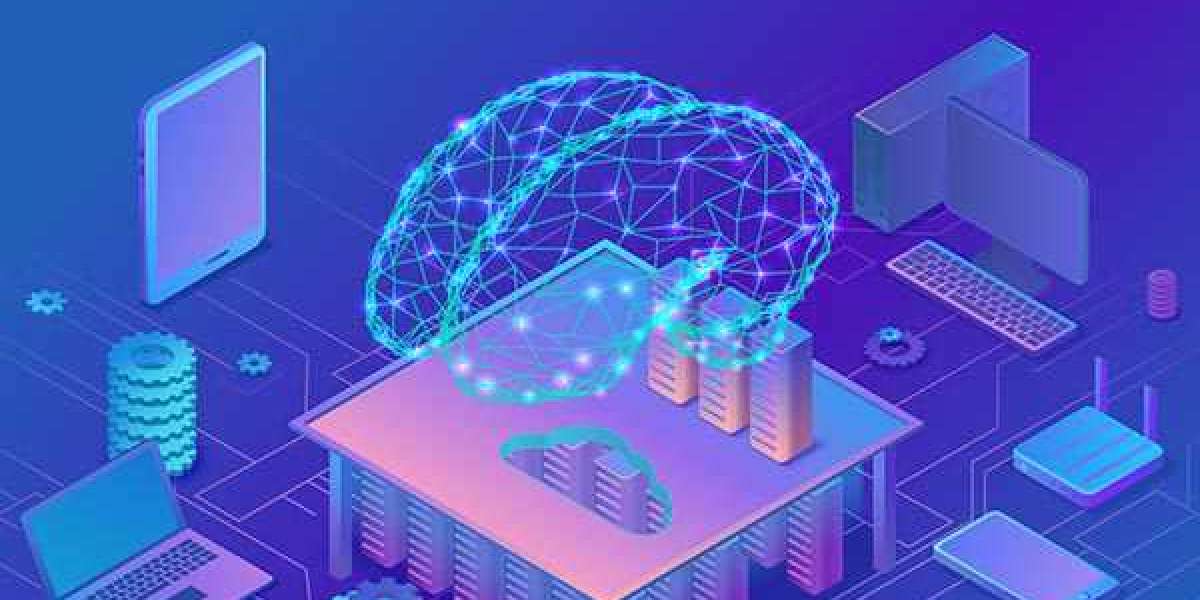Artificial Intelligence (AI) is one of the most transformative and rapidly advancing technologies of our time. From voice assistants like Siri and Alexa to autonomous vehicles and advanced healthcare diagnostics, AI is revolutionizing industries and altering how we live and work. But what exactly is AI, and how does it shape our future?
What is AI?
AI refers to the simulation of human intelligence in machines. These machines are programmed to think, learn, and perform tasks that typically require human intelligence, such as problem-solving, speech recognition, decision-making, and visual perception.
AI systems are designed to mimic cognitive functions like learning, reasoning, and self-correction. The goal is to create machines that can perform tasks as well as, or better than, humans.
Types of AI
Narrow AI (Weak AI):
- This is the most common form of AI today. Narrow AI is designed to perform a specific task or a set of tasks, such as facial recognition, language translation, or playing chess. While narrow AI can perform these tasks with incredible efficiency, it lacks the ability to perform functions outside its specialized domain.
General AI (Strong AI):
- General AI refers to a hypothetical system that possesses the ability to perform any intellectual task that a human can do. Unlike narrow AI, general AI would have the capacity to learn and adapt across different fields of knowledge and perform tasks in multiple domains. We have not yet achieved general AI, but it remains a major focus of research.
Superintelligent AI:
- Superintelligent AI is a concept in which AI surpasses human intelligence in all aspects, from creativity to problem-solving. While superintelligent AI is a topic of much speculation, it remains a distant goal, with experts divided on whether it is achievable or safe.
Key Technologies in AI
Machine Learning (ML):
- Machine learning is a subset of AI that involves training algorithms to recognize patterns and make decisions without being explicitly programmed. ML systems learn from data, improving their accuracy and performance over time. It powers applications like recommendation systems, fraud detection, and personalized marketing.
Deep Learning:
- Deep learning is a subset of machine learning that uses neural networks with many layers to analyze complex patterns in large datasets. It is particularly effective in tasks like image and speech recognition, natural language processing (NLP), and autonomous driving.
Natural Language Processing (NLP):
- NLP enables machines to understand, interpret, and generate human language. It powers applications like chatbots, voice assistants, and language translation tools. NLP allows AI systems to communicate more effectively with humans in their natural language.
Computer Vision:
- Computer vision is a field of AI that enables machines to interpret and understand visual data. It is used in image recognition, facial detection, autonomous vehicles, and medical imaging. Computer vision allows AI to "see" and analyze images, making it a crucial technology in various industries.
Robotics:
- AI-powered robotics involves creating machines that can perform physical tasks. Robots use AI algorithms to navigate environments, make decisions, and interact with humans or objects. From manufacturing robots to robotic assistants in healthcare, AI is enabling robots to take on increasingly complex tasks.
Applications of AI
Healthcare:
- AI has enormous potential in healthcare, from improving diagnostics to discovering new treatments. AI-powered tools can analyze medical data, such as images, lab results, and patient histories, to assist doctors in making more accurate diagnoses. AI also plays a role in drug discovery, personalized medicine, and robotic surgery.
Finance:
- In finance, AI is used for fraud detection, risk management, algorithmic trading, and customer service. AI-powered chatbots assist customers with banking inquiries, while ML algorithms predict market trends and investment opportunities.
Transportation:
- AI is revolutionizing transportation with autonomous vehicles, traffic management systems, and route optimization. Self-driving cars, trucks, and drones are powered by AI algorithms that enable them to navigate roads and deliver goods safely and efficiently.
Retail:
- In retail, AI is used for personalized recommendations, inventory management, and customer service. E-commerce platforms use AI to analyze customer behavior and offer product suggestions based on individual preferences. In-store robots and chatbots enhance the shopping experience by providing real-time assistance.
Manufacturing:
- AI in manufacturing enhances production efficiency and quality control. AI systems can predict equipment failures, optimize supply chains, and automate assembly lines. Machine learning algorithms analyze data from sensors to detect defects and ensure product consistency.
Education:
- AI in education offers personalized learning experiences and assists in administrative tasks. AI tutors can provide customized lessons based on students' needs, while AI-driven platforms help teachers with grading, scheduling, and resource management.
Benefits of AI
Increased Efficiency and Productivity:
- AI can automate repetitive tasks, reducing the need for human intervention. This leads to faster decision-making, reduced errors, and more efficient use of resources, allowing businesses to focus on more strategic goals.
Improved Decision-Making:
- AI systems can process vast amounts of data to provide insights that help humans make better, more informed decisions. In fields like finance, healthcare, and logistics, AI supports decision-making by identifying trends, patterns, and correlations that might be missed by humans.
Personalization:
- AI enhances personalization in consumer experiences. From personalized marketing to tailored recommendations, AI analyzes user data to predict preferences and deliver content that aligns with individual tastes and needs.
Cost Savings:
- AI can help businesses reduce costs by streamlining operations, improving efficiency, and automating tasks. For instance, AI can optimize supply chains, reduce waste, and help companies make more accurate financial predictions.
Innovation:
- AI is driving innovation in various fields, such as healthcare, transportation, and entertainment. It enables the creation of new products, services, and solutions that were previously not possible.
Challenges of AI
Ethical Concerns:
- AI raises ethical questions, particularly around issues like privacy, bias, and accountability. AI systems can inadvertently perpetuate biases present in training data, leading to unfair outcomes. There is also concern about how AI may be used to infringe on privacy or even manipulate individuals.
Job Displacement:
- As AI automates more tasks, there are concerns about job displacement. Many industries may see jobs replaced by AI-powered systems, creating challenges for workers who may need to retrain or transition to new roles.
Security Risks:
- AI systems can be vulnerable to cyberattacks. Adversarial attacks on AI models can manipulate the outcomes, leading to malicious uses. Ensuring the security and integrity of AI systems is crucial to prevent misuse.
Lack of Regulation:
- AI is advancing faster than the laws and regulations that govern its use. Governments and regulatory bodies are still grappling with how to effectively regulate AI, ensuring that it is used responsibly while fostering innovation.
The Future of AI
The future of AI is filled with possibilities. As AI continues to evolve, we can expect even greater integration into daily life. Advances in areas like quantum computing, reinforcement learning, and explainable AI could bring about significant breakthroughs, enabling AI to tackle more complex problems and operate with greater transparency.
In the coming years, AI will likely be increasingly embedded in industries like healthcare, education, manufacturing, and entertainment. While there are challenges to address, particularly around ethics, privacy, and job displacement, the potential of AI to improve lives and drive economic growth is undeniable.








